Textiles
Cretan Textiles
Small Woven Fabrics
Drouvades (sacks), vouryies (shoulder bags) and sakoulia (small bags) were once – and in many parts of Crete still are – items of everyday use for Cretan farmers and shepherds.
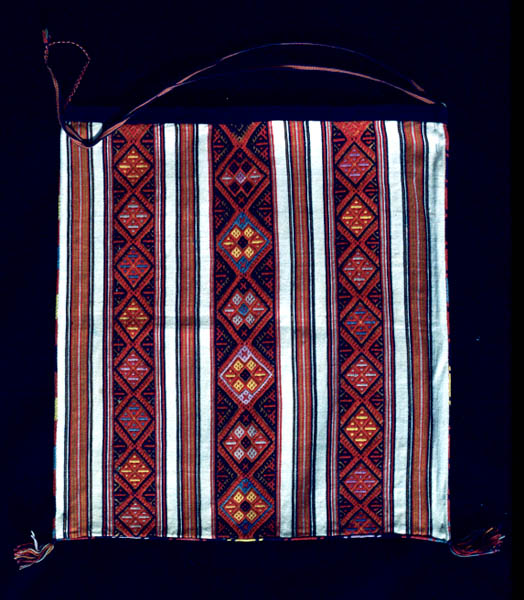
Vouryia, Merambello 1860
In spite of their limited surface area, these items are often very richly and elaborately woven. These small masterpieces of art and craftsmanship are extremely interesting.
In all small woven fabrics with “loom embroidery” decoration, the surface is rigidly arranged with strict adherence to inviolable rules – at least in older woven fabrics – some of which appear to hold true across the whole of Crete, while others belong to the particular tradition of each area.
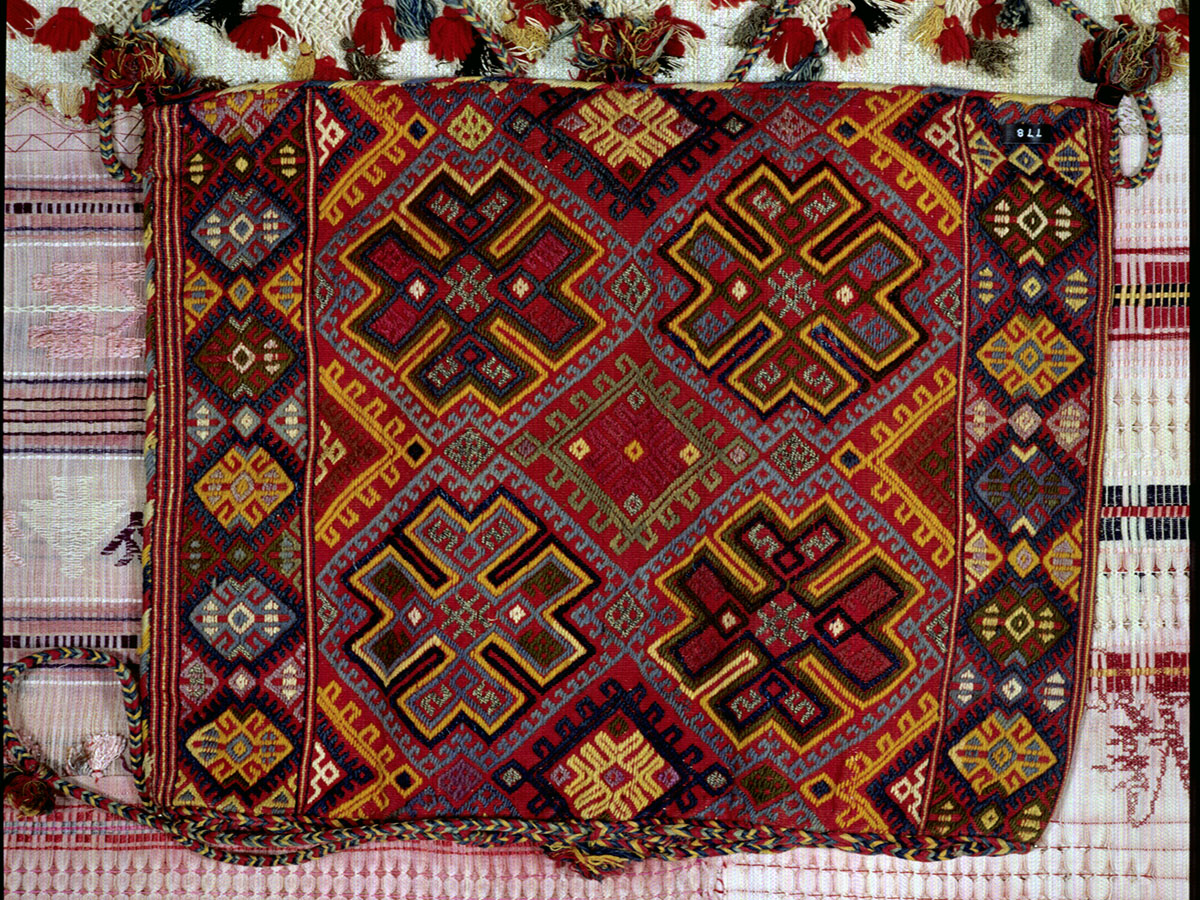
Sakouli, Kissamos 1885
The arrangement of motifs in bands and the symmetry of the decoration along the vertical axis is a characteristic of all Cretan xobliasta bags: there is always a central band – which in some areas is considered particularly important – forming the axis of symmetry for the woven decoration.
On vouryies and drouvades are found the same motifs that adorn large woven fabrics, and also other, special motifs which seem to be used exclusively on small woven fabrics.
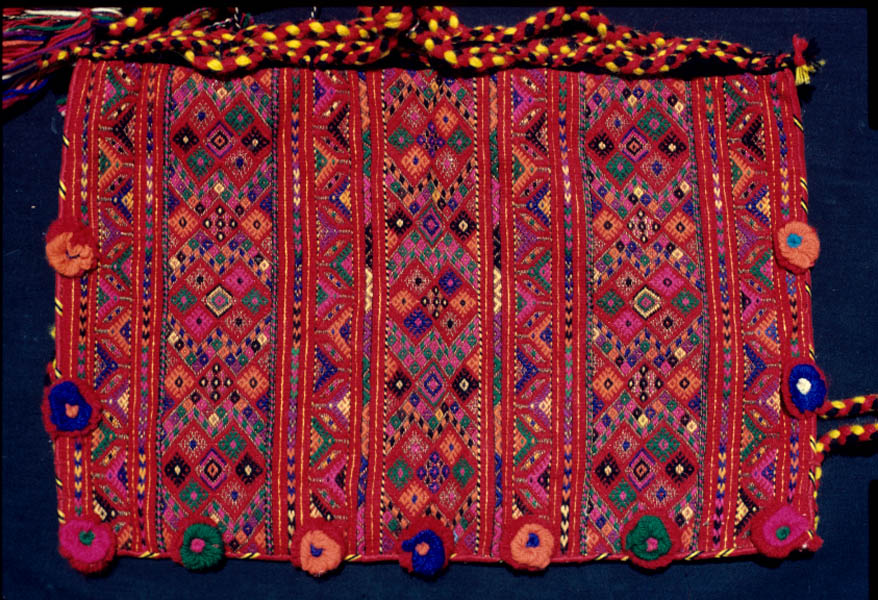
Vouryia, Mylopotamos 1955
Fabrication Method
From the fabrication point of view, there are three types of sakouli (bag):
Type 1: A single piece of cloth 60-70 cm wide (the widest possible) and about one metre long is woven on the loom. The cloth is folded in half and sewn together along the sides. This type of sakouli may have the same or different patterns on both sides.
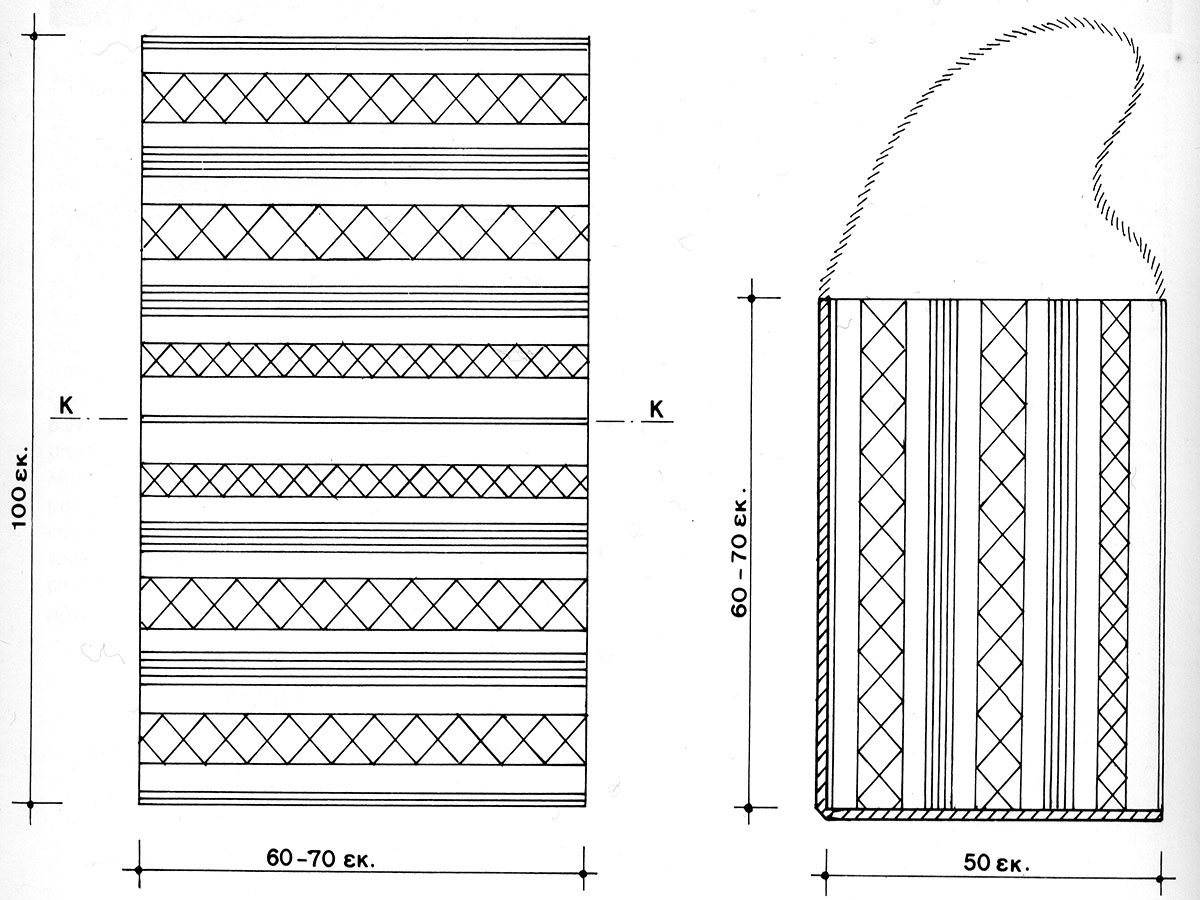
Kilimi, Kissamos 1925. Monochrome and decorated bands, some narrower and some wider with more complex motifs, alternate across the whole surface of the woven fabric.
Type 2: A single piece of cloth about 70 x 45cm is woven on the loom, folded in half and its two opposite sides sewn together. This type of sakouli has the same pattern on both sides and is smaller than those of type 1.
Type 3: Each side is woven separately and they are then sewn together. The sides have different patterns, with a “good side” seen when the bag is worn, and a “secondary” side, which is usually striped and therefore quicker and easier to weave. Type 3 is mainly used for vouryies, which are worn on the back, showing only one side.
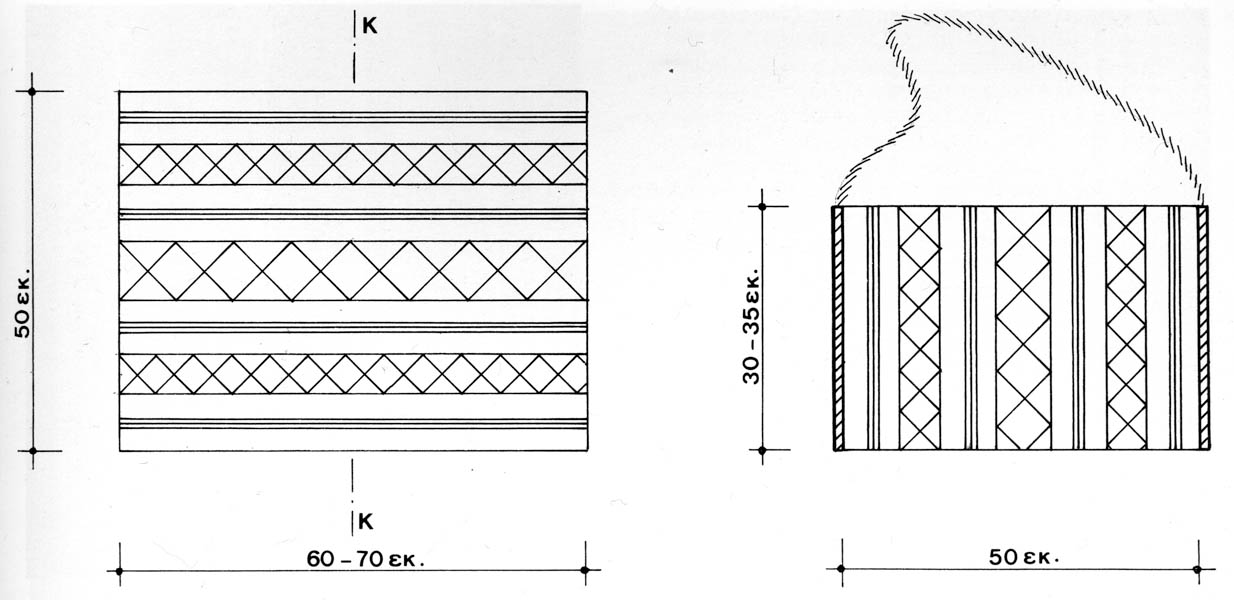
Patania, Cydonia 1980. Monochrome and “static” bands alternate with decorated, “moving” ones: they all look like rows of arrows pointing in the same direction.
Arrangement Of The Surface
On the xobliasta sakoulia (decorated bags) of Crete – when we say sakoulia we always include vouryies and drouvades – the whole surface of the “good” side is covered with decoration.
Depending on the specific way of organizing the surface in each case, there are four basic types of decorated bag.
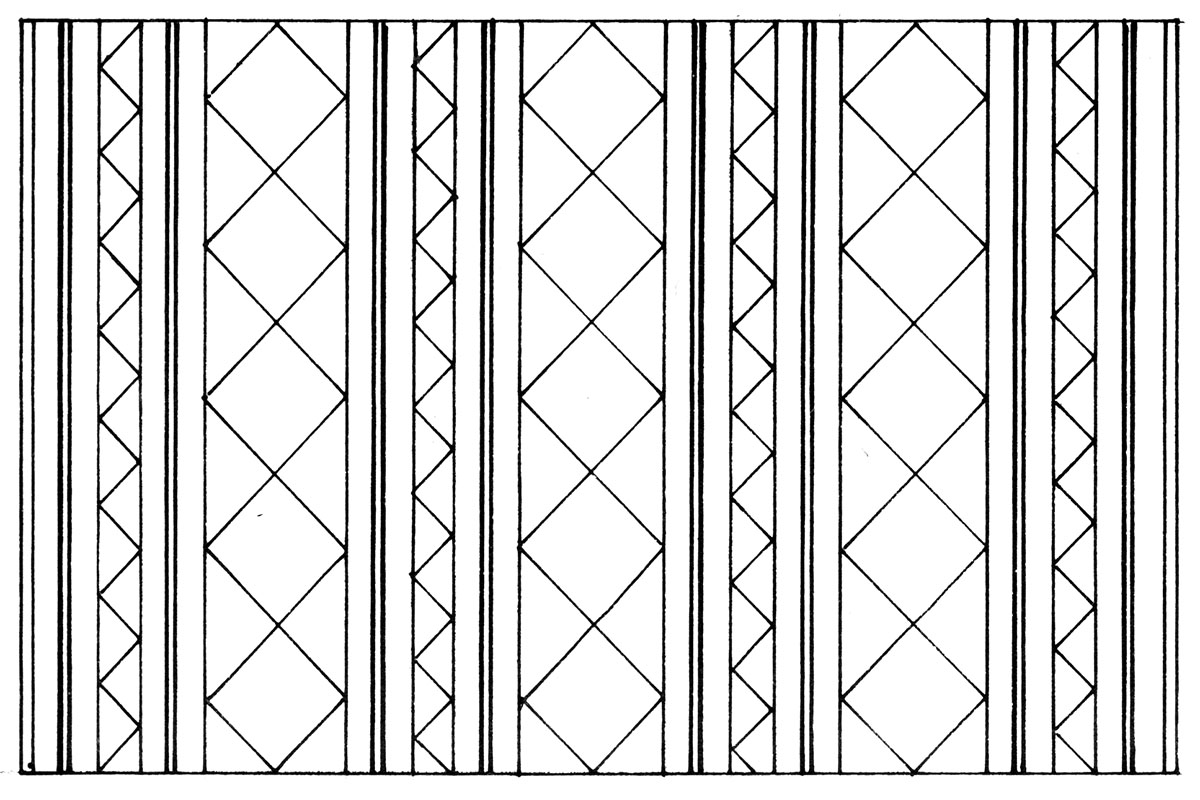
Kilimi, Cydonia 1930. The geometrical patterns here are diamonds whose outlines and regularity are defined by colour.
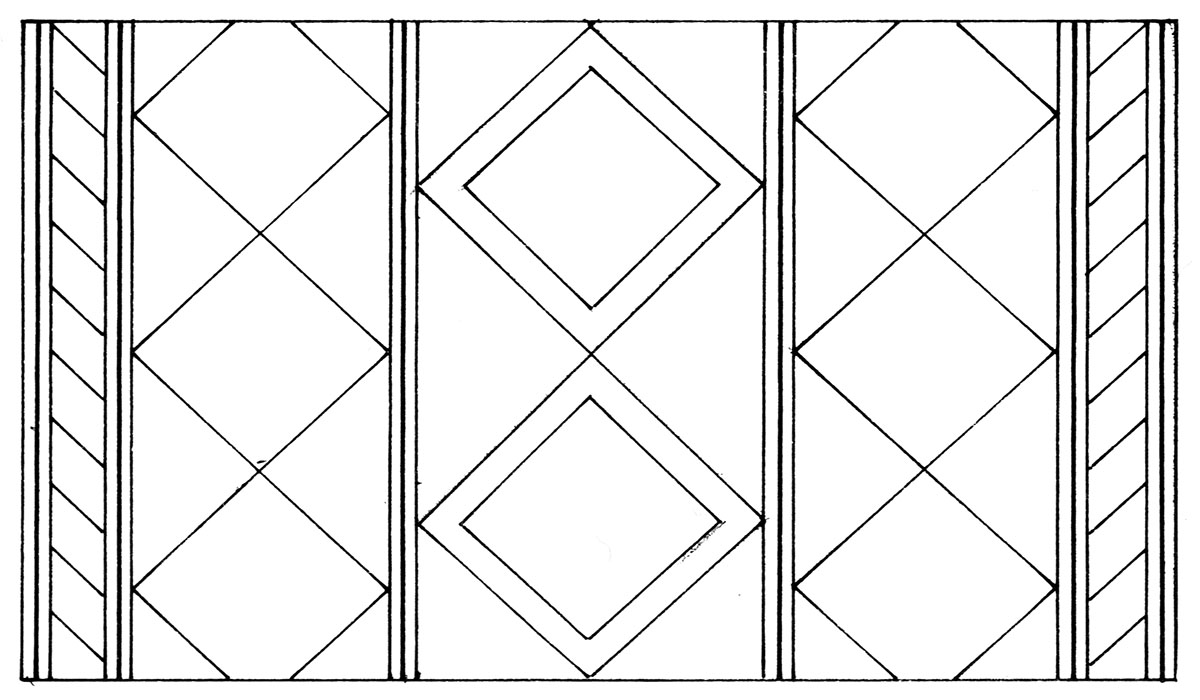
Kilimi, Cydonia 1950. The patterns on this, as on the previous, kilim are diamonds. The unitary motif is different, as is the colour repetition.
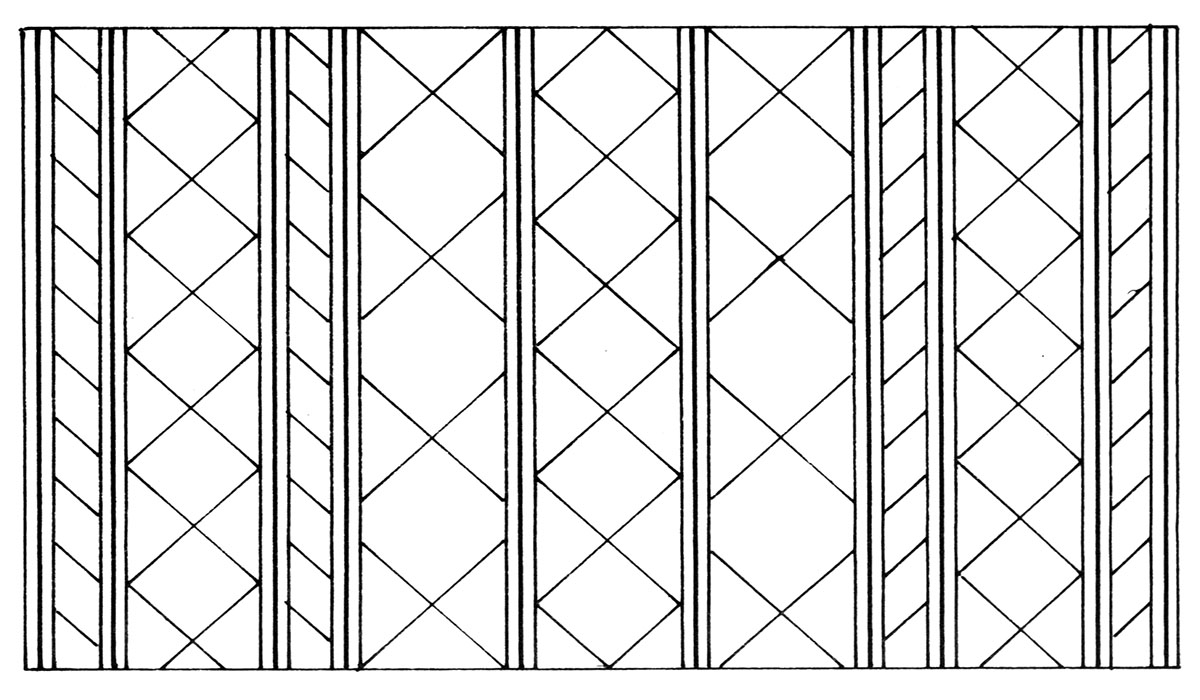
The Xobliasta Sakoulia Of Lassithi Prefecture
The decorated bags of Lassithi are distinguished by their clarity and severity, mainly due to the simplicity of colours chosen and the arrangement of the surface.

Vouryia, Merambello 1860
Unlike the vast majority of decorated bags from other areas of Crete, which have a red background, those of Lassithi have a white or yellow ochre background. The motifs are in the three basic colours: red, blue and, to a lesser degree, yellow.
This chromatic severity is accompanied by a rational use of colours; the same shapes are always the same colour, with the result that the motifs – which are simply coloured shapes – repeated in the bands are very clearly defined.
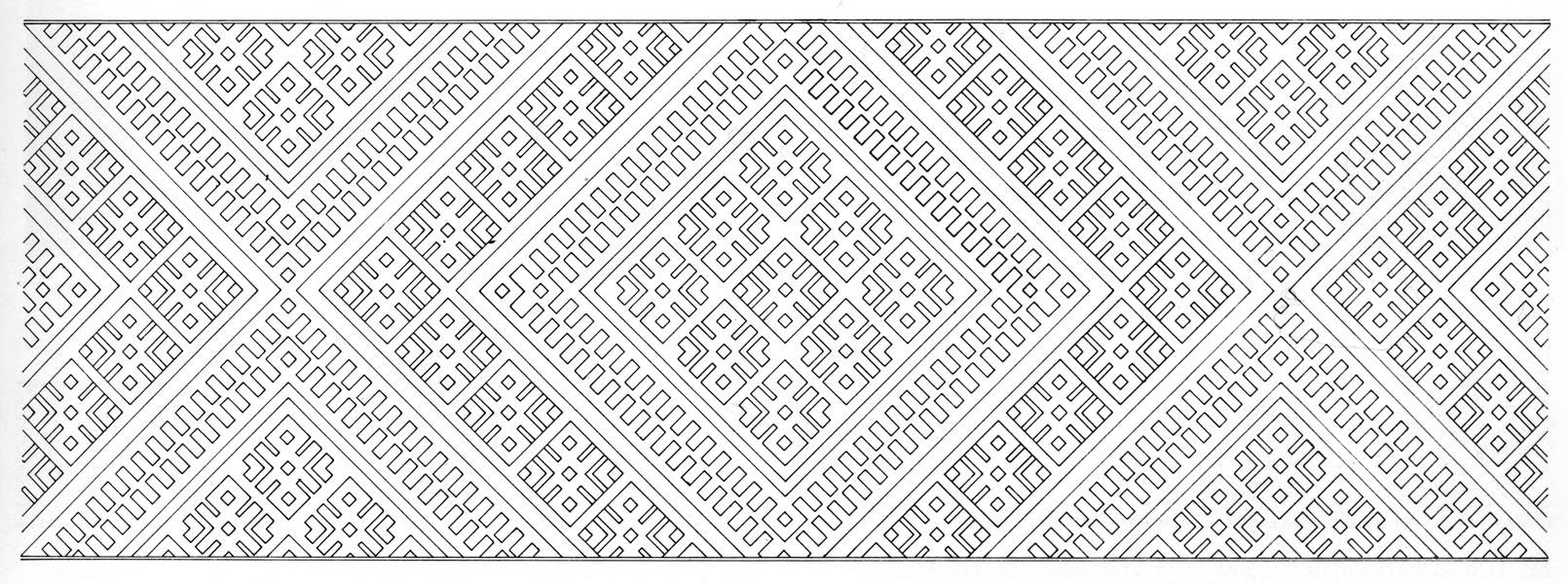
GROUP 1: Monochrome bands alternate with bands decorated with simple motifs. (Kilimi, Cydonia 1920)
The distance between decorative bands contributes to the general impression of severity and definition characteristic of Lassithi bags. The bands are separated in two ways: either by white ground, or by completely different bands composed of groups of narrow stripes.

Kilimi, Cydonia 1930. The colour pattern is such that the final impression is of regularly repeated bands.
The Xobliasta Sakoulia Of Chania Prefecture
In Chania Prefecture we find only a few decorated bags, all with the characteristic “Sfakia” motif woven on the “good” side.
This motif is the central theme of Chania bags. It stands out on account of its size and central position on the surface of the weave, placed in a wide decorative band
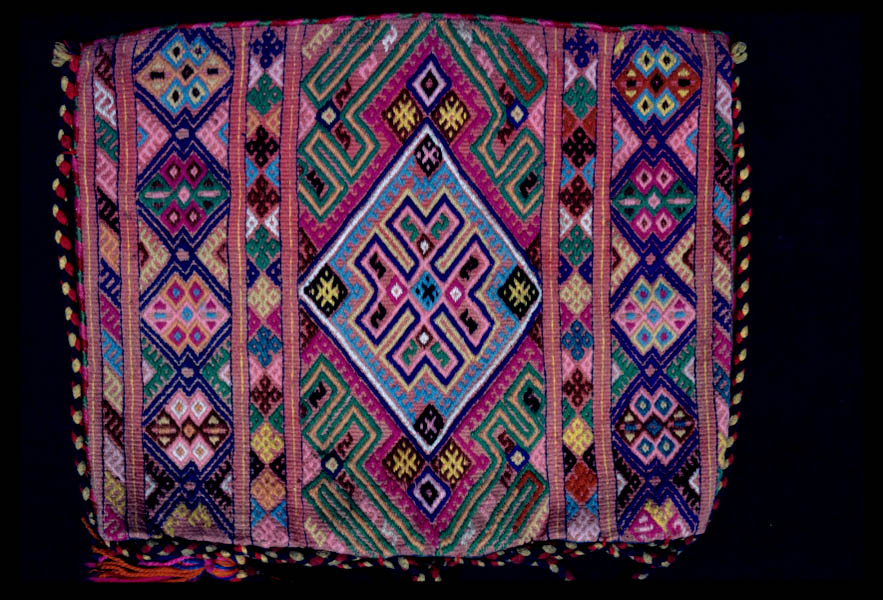
The rest of the surface looks as if it has been filed in with appreciably narrower bands, placed symmetrically to the central band with the basic motif.
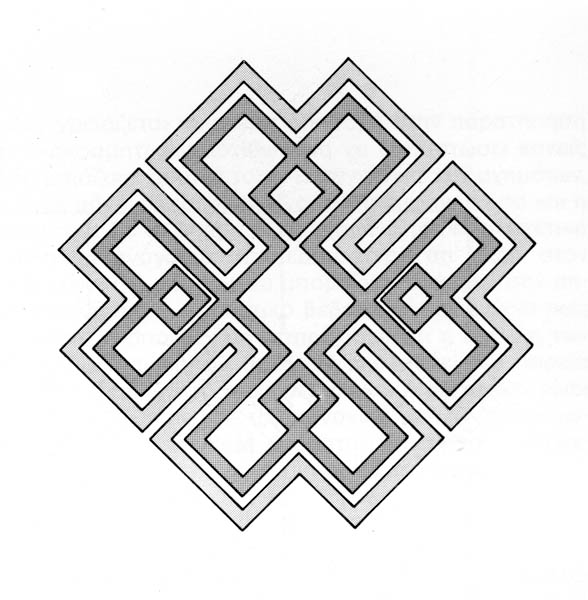
The dominant colour on Chania bags is red, as it is used for the ground. All available colours are used in the motifs: blue, light blue, violet, pink, red, ochre, green and white.
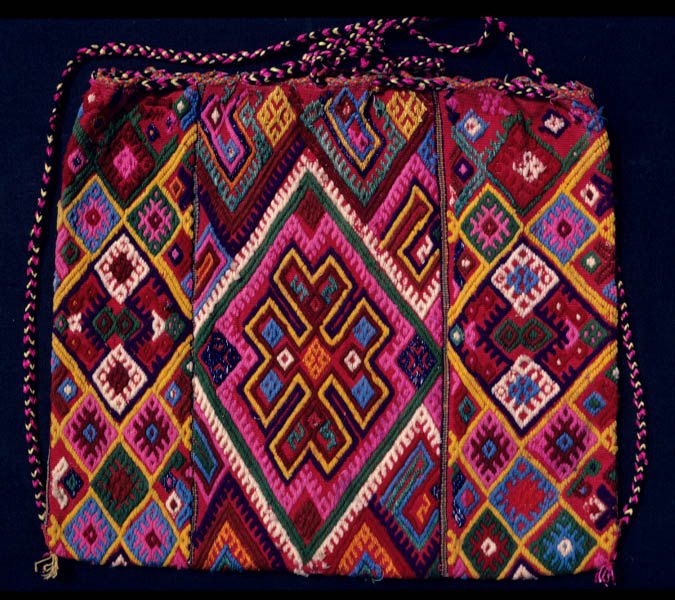
The Xobliasta Sakoulia Of Central Crete
In Central Crete (Prefectures of Heraklion and Rethymnon) we find an extraordinary variety of decorated bags.
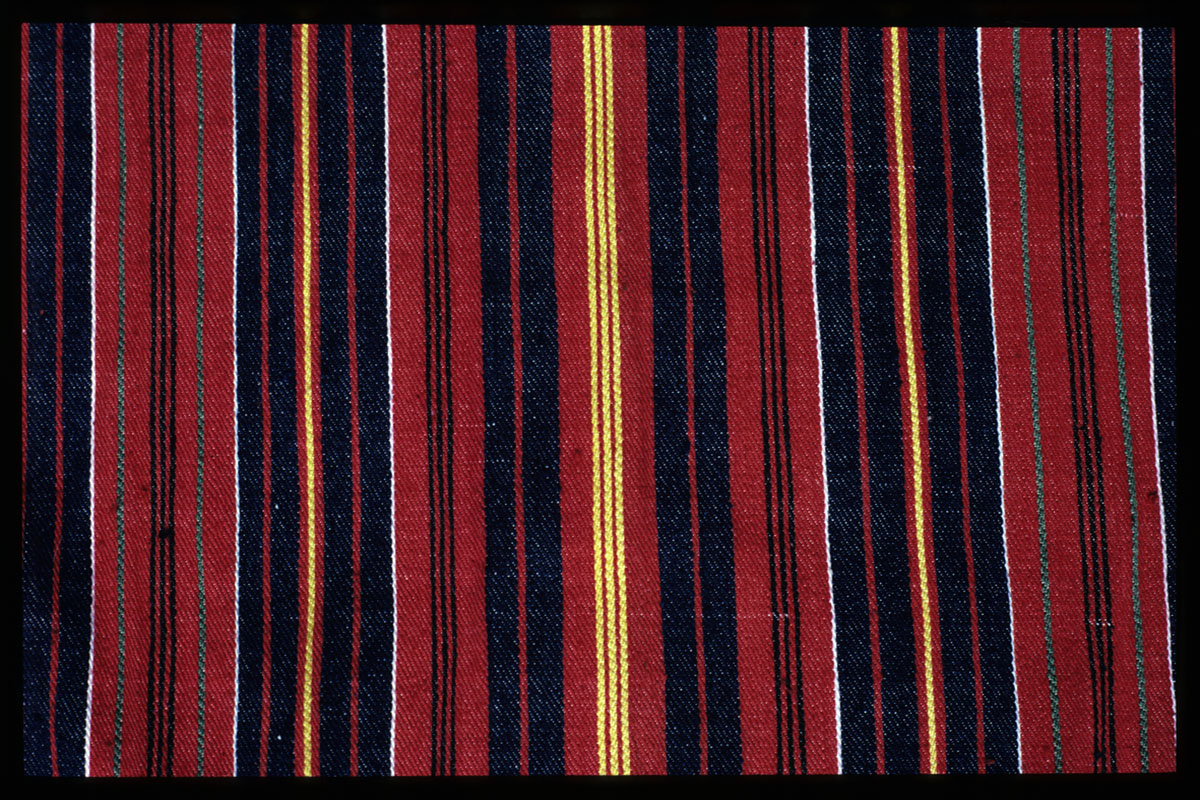
Vouryia, Kenourio. All three bands are “heptarodates”, i.e. the inner surface of the motifs is divided into seven rhombs or “roses” (roda).
They differ as to the type of decoration – wide bands of geometrical motifs or just narrow bands with very simple motifs – the arrangement of the surface of the woven fabric, and finally the decorative motifs themselves.
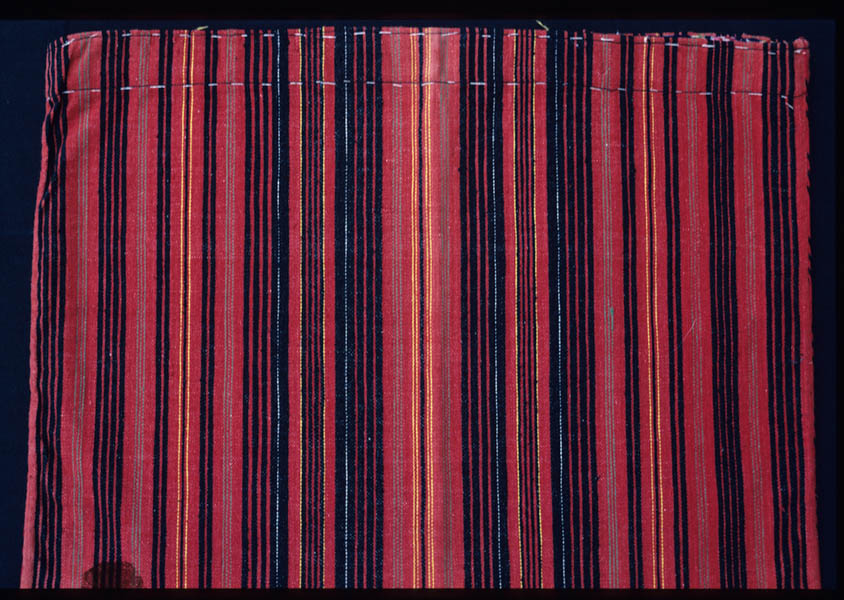
Vouryia, Mylopotamos 1955. The central band contains “tetrarodatoi” diamonds (divided into four “roses”), while the two bands on either side contain “heptarodatoi” rhombs.
The vouryies of Central Crete are usually reddish. This impression is due to the red ground which shows between the bands and the lines of the motifs.
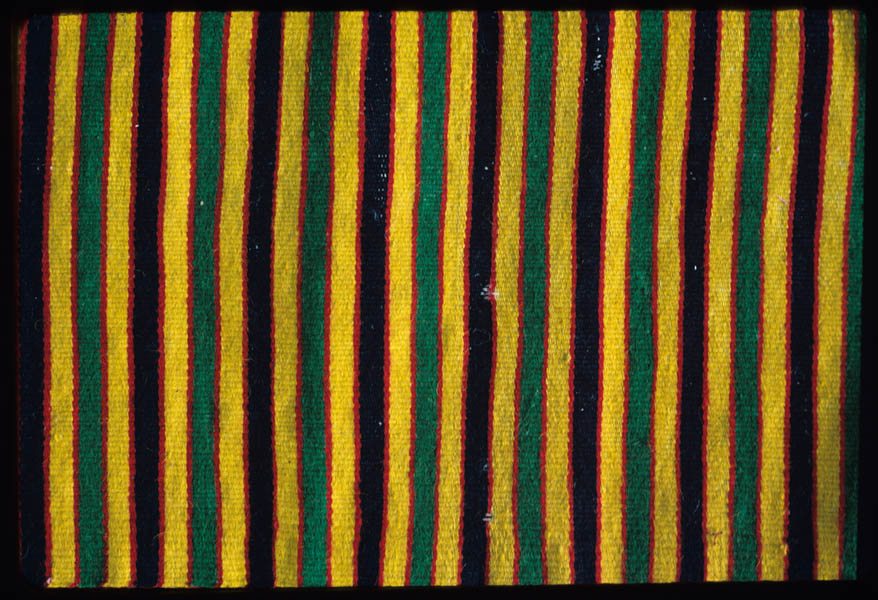
Vouryia from the Monofatsi district (1870). The central band is embroidered with a double row of the characteristic soufroxomblo motif.
The Anoyia Type
Many vouryia bags have three main decorative bands containing two types of motif: either whole diamonds, or diamonds with two points “cut off”.
This type of decoration is called the “Anoyia type” because, although these vouryies form only a small percentage of the whole in other areas, in Anoyia they definitely predominate.
Whereas the variations of motifs may seem insignificant to us, they are particularly important to the weaver, who relies on them to determine the bands and therefore often the whole structure of the vouryia.
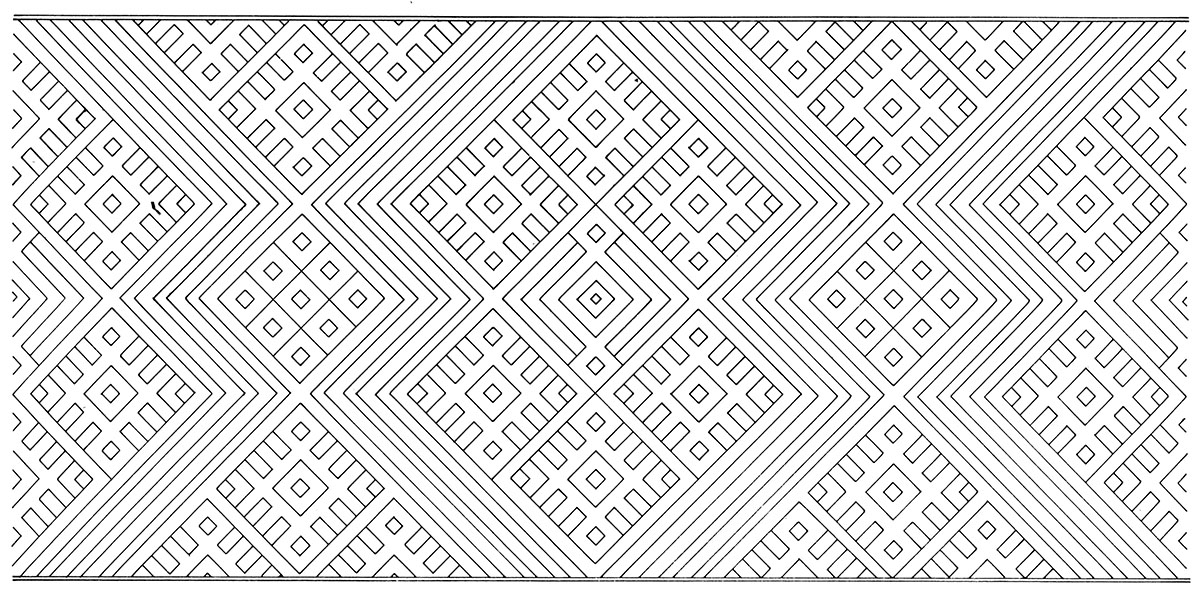
Vouryies With Distinctive Decorative Bands
Apart from vouryies with “classic” decorative bands, in Central Crete we also find vouryies with distinctive bands of motifs. These bands are particularly interesting and rarely found on larger woven fabrics (kilims etc.)
Vouryies With Narrow Decorative Bands
Many vouryies of Central Crete bear only narrow decorative bands with simple motifs. The bands are often so thin that their motifs cannot be distinguished and the woven fabric looks striped.
In other cases the motifs are larger and allow the weaver to play with colours.
